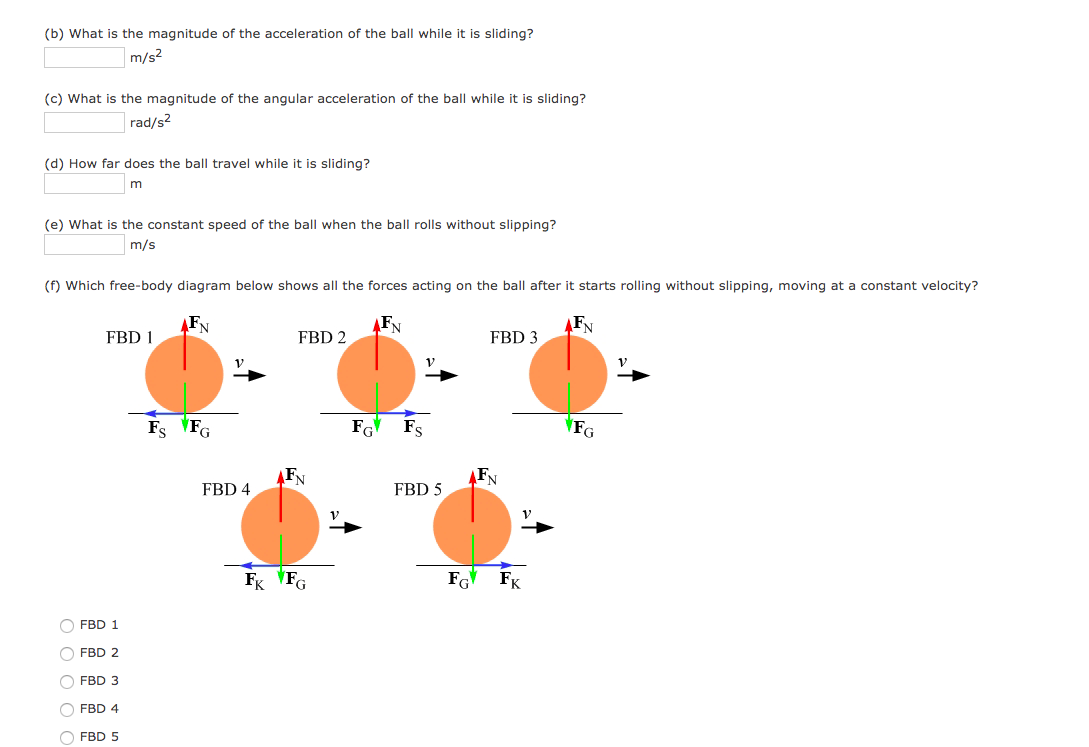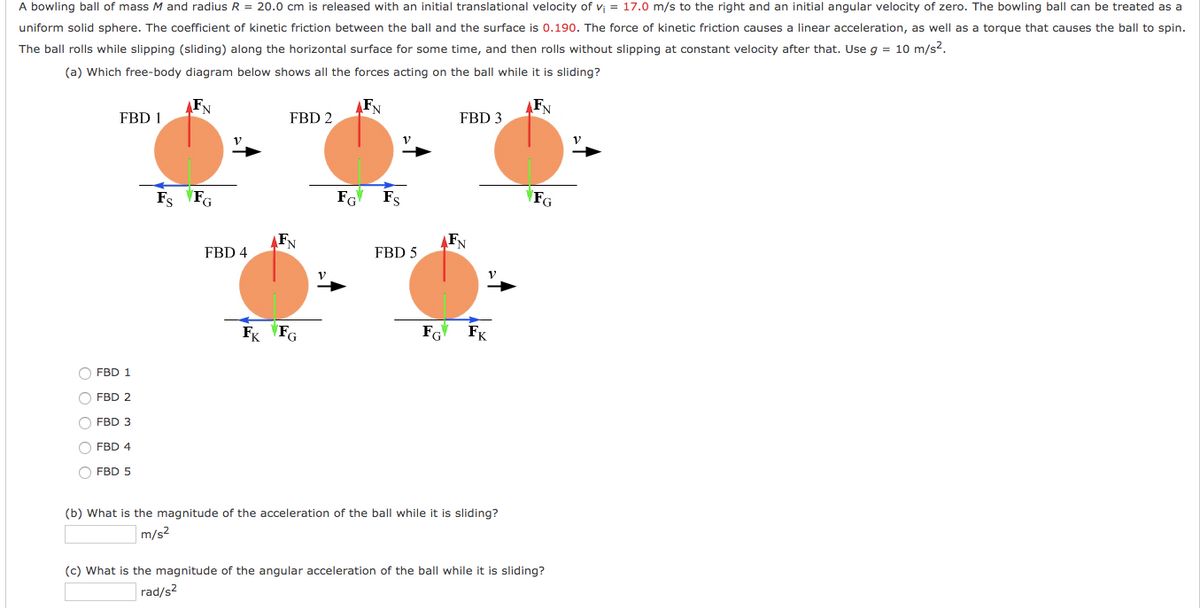A bowling ball of mass M and radius R = 20.0 cm is released with an initial translational velocity of v = 17.0 m/s to the right and an initial angular velocity of zero. The bowling ball can be treated as a uniform solid sphere. The coefficient of kinetic friction between the ball and the surface is 0.190. The force of kinetic friction causes a linear acceleration, as well as a torque that causes the ball to spin. The ball rolls while slipping (sliding) along the horizontal surface for some time, and then rolls without slipping at constant velocity after that. Use g = 10 m/s?. (a) Which free-body diagram below shows all the forces acting on the ball while it is sliding? FN Fy FN FBD 1 FBD 2 FBD 3 Fs FG FG Fs FG FN FN FBD 4 FBD 5 Fx FG FK O FBD 1 O FBD 2 O FBD 3 O FBD 4 O FBD 5 (b) What is the magnitude of the acceleration of the ball while it is sliding? m/s2 (c) What is the magnitude of the angular acceleration of the ball while it is sliding? rad/s?
Angular Momentum
The momentum of an object is given by multiplying its mass and velocity. Momentum is a property of any object that moves with mass. The only difference between angular momentum and linear momentum is that angular momentum deals with moving or spinning objects. A moving particle's linear momentum can be thought of as a measure of its linear motion. The force is proportional to the rate of change of linear momentum. Angular momentum is always directly proportional to mass. In rotational motion, the concept of angular momentum is often used. Since it is a conserved quantity—the total angular momentum of a closed system remains constant—it is a significant quantity in physics. To understand the concept of angular momentum first we need to understand a rigid body and its movement, a position vector that is used to specify the position of particles in space. A rigid body possesses motion it may be linear or rotational. Rotational motion plays important role in angular momentum.
Moment of a Force
The idea of moments is an important concept in physics. It arises from the fact that distance often plays an important part in the interaction of, or in determining the impact of forces on bodies. Moments are often described by their order [first, second, or higher order] based on the power to which the distance has to be raised to understand the phenomenon. Of particular note are the second-order moment of mass (Moment of Inertia) and moments of force.


Trending now
This is a popular solution!
Step by step
Solved in 2 steps with 2 images









